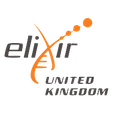|
Welcome to the Phyre2.2 Help page.
Phyre2.2 is an update to Phyre2.
It should run faster, and uses a new fold library based on UniProt
entries rather than on SCOP domains. The original Phyre2 algorithm and
fold library will still be available via an option on the home page.
As with Phyre2, the new system is designed around the idea that you
have a protein sequence/gene and want to predict its three-dimensional
(3D) structure. Whereas Phyre2 produced the alignment of hidden Markov models via
HHsearch1, Phyre2.2 uses the faster program HHBlits2, which comes from the same
laboratory; in spite of running up to ~100 times faster, it gives comparable results.
Phyre2.2 presents the results in a slightly different way than Phyre2; rather than
being strictly in order of increasing E-values as reported by HHBlits (or HHSearch),
the results are analysed to distinguish different domains, and these are grouped together
at the top of the list.
The new fold library contains templates for both apo- and holo- proteins with the same
sequence. This results in models for both, which can be useful when studying the binding
modes of proteins to ligans, for example.
Because the AlphaFold DB with over 220,000,000 models is now available, we have implemented
a function to allow one-to-one threading using this database. One-to-one threading allows
the user to build a model for their sequence based on a single template; previously the user
had to supply a PDB file (derived from the PDB itself or perhaps from an unpublished in-house
structure), but now the sequence can be aligned against all entries in the Alphafold DB and the
best fit used as a template.
If you are completely new to the ideas of protein structure prediction
the video below will give you a very brief overview of the general
technique. More videos will be available soon from the "Video Tutorials" link above.
|


